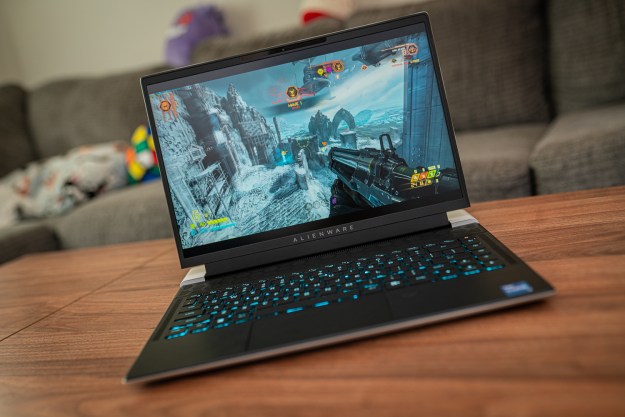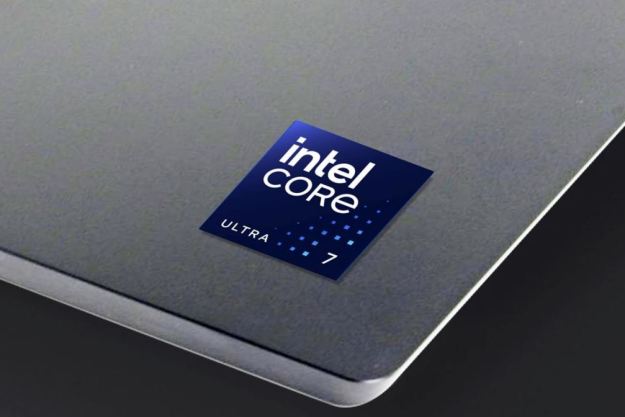
Modern computers, especially laptops, are built with a number of stopgaps between firing up a TV show and shutting down. You’d likely give up using your laptop because programs aren’t working long before it crashes. It keeps the temperature in check through a combination of fan speed control, power management, and throttling.
These techniques do a decent job keeping your laptop from melting, but how do they affect the user experience? When your next evening HBO GO session gets steamy, you’ll know exactly when to crack a window and cool off.
The test procedure
The first test we used was 7-Zip, a common utility for packing and unpacking .zip files. It has a built-in benchmarking utility that compresses and decompresses data which resembles an assortment of files. It places constant load on the processor, forcing it to fire up and run as quickly as it can.
The second utility is Futuremark’s 3DMark program. It’s a series of four graphical tests – short sequences that are increasingly difficult to render. These strain most components of a laptop, and of course place heavy load on the GPU, which is often the hottest chip in a modern PC.
To see how these tests impacted performance in different environments we ran them first with each laptop on a flat, solid desk, with no obstructions around it to prevent venting hot air or pulling in cool air.
Then we used a sleeping bag as a proxy for a situation where your laptop might not be able to vent well – like a bed, or your lap. We spread the sleeping bag out flat on a table, then set the laptop on top.
We used RealTemp to keep a time-stamped log of each core’s temperature, the GPU’s temperature, and the overall clock speed. In some cases, it was able to read the processor’s reported maximum temperature, and would also track if a core was OK or Hot. We tracked all of these statistics throughout both tests so we could chart the data and identify trends.
What happened, in a nutshell
Three laptops were tested; the Alienware 15, the Lenovo ThinkPad T450s, and the Asus UX305. Detailed results can be found in the links below, but if you want the summary, here’s what happened.
Surprisingly, the laptops did not experience significant slowdown when placed on the sleeping bag. Performance was identical more often than not. None of the laptops crashed or turned off automatically, not even when we ran the 3DMark benchmark to engage both the processor and the graphics chip.
That means system temperature does not significantly impact speed. Buying a laptop cooler under the theory that it may improve performance or stability seems a waste of money, and you can comfortably use a modern laptop in sub-optimal conditions without concern that it’ll overheat and reboot (or worse).
With that said, using the laptops on a sleeping bag did drastically increase external temperatures. At the worst, as with the Alienware 15, they shot high enough to be potentially hazardous. At best, they were high enough to be very uncomfortable.
Using a laptop on a surface that retains heat, or blocks the intake of cool air, will give you a case of sweaty palms. Some might argue it will decrease long-term durability — though that’s outside the scope of this test. But it won’t make your system slow to a crawl.
Detailed results
Next page: Alienware 15 testing
Alienware 15
The Alienware 15 is a fast, heavy gaming laptop that’s more of a desktop replacement than a portable rig. Our test unit came with an Intel Core i5-4210H, which is a dual-core processor with a base clock of 2.9GHz, 16GB of RAM, and a GTX 970M.
While sitting on a desk, 7-Zip caused the processor initially to spike to about 75 degrees, but then the fans kicked in and the system kept a cooler 68-degree average for extended periods. True to expectations, the clock speed stayed constant throughout the test, and spiked for short periods when a little extra horse power was needed.

Nestled warmly in our sleeping bag, the cores hit their hot point of 80 and never dropped below 75. Despite that, the effects of heat on the Alienware’s processor weren’t striking. In fact, it didn’t appear that during our testing, the heat had any effect on the processor’s overall clock speed. The extra heat didn’t slow down the average clock speed of the processors as much as it limited its use of extra features like Turbo Boost.

The 3DMark tests told a similar story of the effects of heat on performance. On the desk, the system was able to frequently boost the total clock speed up to 3.4GHz, which it was able to do because it had room in its thermal overhead.
With the system on the bag, the processor held firm during the 3DMark test at its base clock of 2.9GHz after an initial high point – the Turbo Boost feature basically turns off. When it was cooler, the laptop could gun it to load a scene, then back off to handle the smaller pieces of the test without overheating or needing Turbo Boost.

Placing the Alienware on the bag had an adverse impact on external temperatures. The maximum external reading shot up to 143 degrees Celsius, more than hot enough to burn a user through prolonged contact. Presumably, you’d move the laptop if that became an issue, but it’s worth note. Sitting a hot laptop on your legs or your hands might become a health issue should it remain in place long enough.

While sitting on the desk, the GPU never broke 70 degrees Celsius, a very comfortable operating range for the chip. While on the bag, the core’s temperature only went below 70 once, and very briefly. It hovered around 75 or 80, pushing over 85 a few times.
The 3DMark results showed a direct correlation between heat and gaming performance. With proper cooling, the Alienware scored 5,768 on the First Strike test. On the sleeping bag, the score dropped to 5,106. In the 3DMark Sky Diver test, the Alienware scored a 14,160 on the desk, which came down to 12,043 while hot. Cloud Gate dropped from 11,647 to 9,342 without room to breathe, and Ice Storm went from 63,914 to 61,645.
That’s an average 12.5 percent drop in performance across all four tests. Even if you don’t use your laptop for gaming, that’s a noticeable dip in the stability and speed of your system. If you do use it for gaming, you’ll see that change in lower framerates and longer load times.
Detailed results
- Alienware 15
- Lenovo ThinkPad T450s
- Asus UX305
- What does this mean for you?
Next page: ThinkPad T450s testing
ThinkPad T450s
The ThinkPad T450s we used for this test was modestly equipped, which was perfect for seeing how non-gaming laptops fare when we turned the heat up. This ThinkPad had an Intel Core i5-5300U processor, a dual-core chip with a base clock of 2.3GHz, and a Turbo clock of 2.9GHz, along with eight gigabytes of RAM.
While on a flat, level desk, the Thinkpad was able to keep its cool just fine by making use of the vents on the bottom and sides. The clock speed stayed consistent throughout the test, and the cores settled at a comparatively chilly 64 degrees.

It quickly became clear that the ThinkPad relies heavily on those vents to pull in cool air, and sitting in the sleeping bag, that’s no easy task. Its temperature on the bag quickly shot up well above what we’d seen while it was sitting on the desk.

That heat had a minor effect on the Thinkpad’s performance, similar to what we saw on the Alienware. The processor mostly held at a point above its base clock, a stressed point of just under 2.7GHz. The CPU’s cores were more willing to jump into Turbo Boost when on the desk – the T450s did so eleven times while on the desk, but only eight while on the sleeping bag.
As you’d expect, placing the system on the sleeping bag sharply increased operating temperatures. While the fans kept the system cool for a few seconds, the lack of cool near air from the intake vents became a problem in less than a minute. The T450s shot above 70 degrees Celsius, about ten degrees hotter than its typical operating temperature on the desk, and stayed there. Its hottest point, 85 degrees Celsius, is at the system’s theoretical shut-down point.

Despite the heat, only a slight difference in 3DMark score separated the system on a desk with the system on the sleeping bag. In a couple of the tests, the system scored better while on the sleeping bag than on the desk, but not more than the standard variance for a machine running the same test twice. That can largely be attributed to the fact that the Thinkpad has no dedicated GPU.

The external heat was definitely noticeable on the Thinkpad T450s when it was on the sleeping bag. While on the desk, the system’s external temperature didn’t break 100 degrees Fahrenheit, but got up to 111 degrees while sitting on the sleeping bag. It isn’t a gaming machine, so the 3DMark scores aren’t as important in the long run, but that external heat may be an issue if you’re trying to get some work done between flights.
Detailed results
- Alienware 15
- Lenovo ThinkPad T450s
- Asus UX305
- What does this mean for you?
Next page: Asus UX305 testing
Asus UX305
The results from the Asus UX305 look a bit different than our other results, and for good reason – the system is fanless. The review system has an Intel Core M 5Y10 processor, a 256GB SSD, and 8GB of RAM, plus a 1080p display. The new Intel Core M processors have a low power and heat output, which theoretically means it needs to be more aggressive with its power management, since it can’t ramp up the fan speed to aid with cooling.
It should also mean that the difference between running the system on a desk and on a sleeping bag is almost nonexistent. As you can see from the graphs below, the temperature was almost exactly the same regardless of location.

As it turned out, the UX305 was one of the more resilient systems when it came to maintaining power when things got too warm. In fact, as the system heated up, the clock speed didn’t seem to drop at all, and even when it was on the sleeping bag, it still kicked on the Turbo Boost when it needed it. The clock speed of the M-5Y10 was predictably the same whether it was on the desk or the sleeping bag, hovering at 1,995MHz for the entire test period.

The 3DMark results pointed to a slight decrease in performance with the system in the sleeping bag. The temperature difference was almost negligible, but even that increase was enough to bring down the results. Unlike the dramatic 12.5 percent drop with the Alienware, the Asus UX305 only demonstrated a 2.25 percent average decrease across the entire 3DMark suite.

Presumably, at a certain point the system would get too hot and shut down to prevent damage, but that wouldn’t be until the processor reached around 100 degrees Celsius, much hotter than we were able to get it.

It was also consistent when it came to external temperature. The UX305 was hottest on the bottom of the computer, near the center, and reached about 123 degrees Fahrenheit on both the desk and the sleeping bag. Either way, that’s a pretty uncomfortable temperature to be sitting on your lap, although fanless Core M processors aren’t designed for intense use anyway, and the strain we put on it with 7-Zip is intense.
Detailed results
Next page: What does this mean for you?
What does this mean for you?
The performance impact of high internal temperatures was not significant in most cases. The greatest deviation we noticed was a 12.5-percent hit to the Alienware 15 in 3DMark when the system was placed on a sleeping bag. Otherwise, processor and game benchmarks indicated no notable fluctuation in performance.
Given that, we come to an interesting conclusion; using your laptop on a heat absorbent surface is unlikely to make the system perform more slowly. In most situations, a laptop should tick along with minimal difference. Turbo Boost won’t kick in as frequently, but its absence is hard to notice unless you’re running benchmark software.
Does that mean you should bring your laptop to bed without worry? Not necessarily. There’s reason to think higher temperatures could have impact long-term reliability. One recent study conducted using Facebook’s data centers, for example, discovered that solid state drives fail more frequently when forced to operate at high temperatures.
Using the laptop on the sleeping bag also drastically increased external temperatures in one of our laptops, the Alienware 15. It became so hot that it might cause a health issue if left in contact with skin; presumably you’d notice, but it’s still a concern. The other systems showed a less dramatic increase in temperature, but were hot enough to be uncomfortable during prolonged use.
Clearly, you’re better off using your laptop on a proper surface than not. But if you need to do some serious work, and only have your lap to hold it on while you do so, you shouldn’t have to deal with your PC performing more slowly than normal.
Detailed results
- Alienware 15
- Lenovo ThinkPad T450s
- Asus UX305
- What does this mean for you?
Editors' Recommendations
- Does your Mac need antivirus software in 2024? We asked the experts
- How to keep your gaming laptop cool
- I tested 3 years of mini-LED gaming laptops, and I was shocked by the results
- Stop spending so much money on your laptop
- Why the most powerful laptops of 2024 might not use Intel’s latest chips





